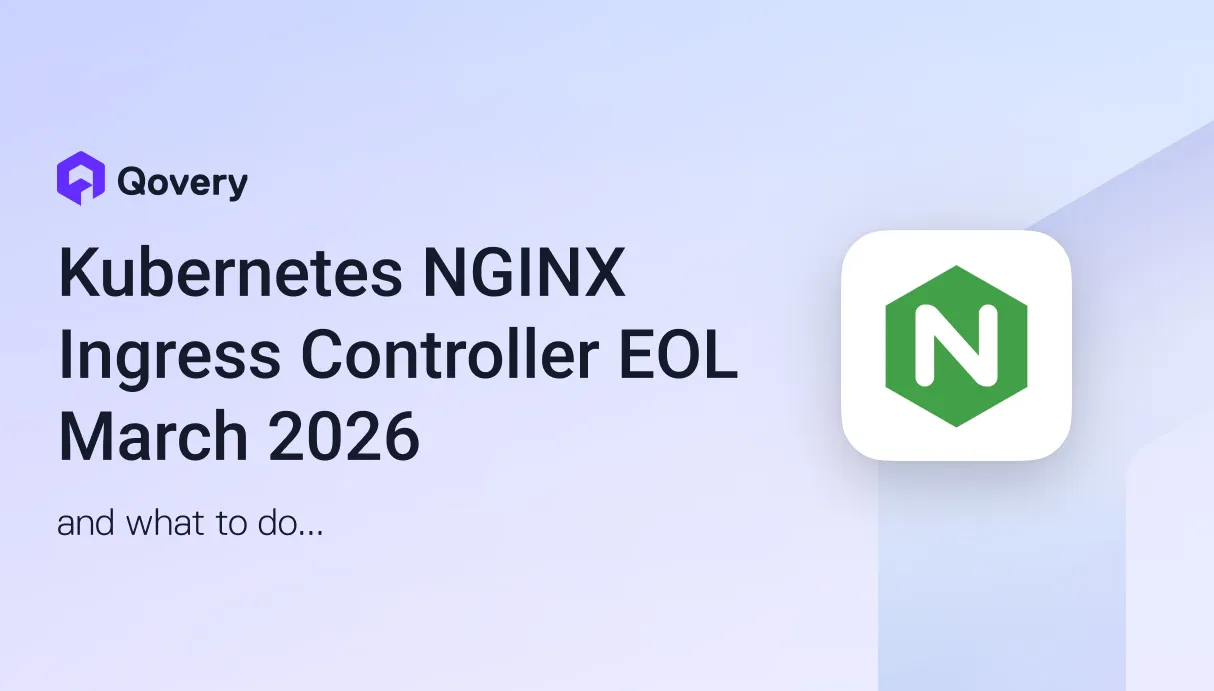
IT Infrastructure Management: Best Practises For Startups

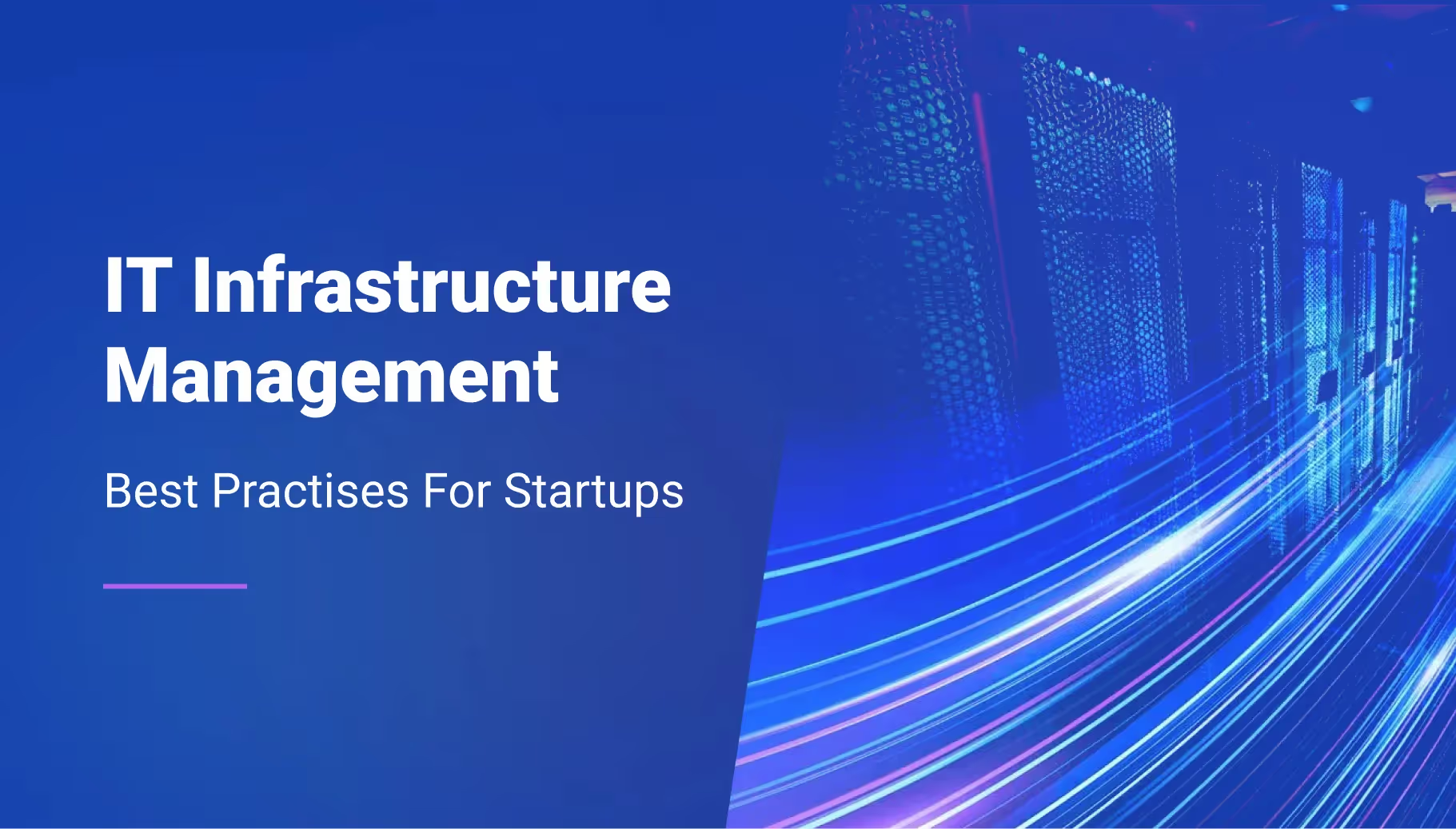

Standardization and Documentation
Establish a consistent environment
- Use standardized cloud services and configurations, such as the same instance types, storage classes, and networking setups across environments, to reduce complexity and make troubleshooting easier.
- Simplify management and reduce complexities by avoiding mixing different cloud services for similar tasks, which can add unnecessary complexity and increase management overhead. Standardization helps ensure predictable performance and simplifies the learning curve for new team members.
Maintain clear documentation
- Keep detailed records of configurations, including network settings, IAM policies, and deployment procedures. Use tools like Confluence, Notion, or Git for centralized documentation to facilitate easier onboarding, troubleshooting, and knowledge sharing among team members. A network or infrastructure diagram is also a critical part of infrastructure documentation.
- Facilitate easier onboarding and knowledge transfer by creating onboarding guides specifically for new hires that outline the infrastructure, common workflows, and key best practices. Use practical examples to help new team members get up to speed faster. Encourage senior members to conduct periodic knowledge-sharing sessions to avoid knowledge silos.
Infrastructure Security and Compliance
Implement infrastructure-focused security measures
- Establish secure access controls and permissions within your cloud environment by enforcing role-based access control (RBAC), using least privilege principles, and implementing multi-factor authentication (MFA) for sensitive actions. Avoid using hard-coded credentials or sharing access among multiple users. Instead, use centralized identity management to enforce individual accountability.
- Utilize network security groups and identity management solutions like AWS IAM or Azure AD to manage permissions centrally, which reduces the risk of unauthorized access. Avoid granting excessive permissions—implement the principle of least privilege to ensure each user or service has only the access they need.
Adhere to compliance standards
- Align infrastructure with relevant compliance frameworks (e.g., GDPR, SOC 2, ISO 27001). Use automated tools like AWS Config or Azure Policy to ensure compliance policies are enforced.
- Regularly audit and monitor infrastructure for compliance adherence using tools like Cloud Security Posture Management (CSPM) solutions. Conduct regular security and compliance audits to identify potential gaps, and ensure that audit logs are securely stored and reviewed periodically for any unauthorized activities. Proactive monitoring helps in identifying and mitigating risks before they become critical issues.
Cost Management
Optimize resource allocation
- Utilize cost-effective cloud services such as reserved instances or spot instances for non-critical workloads. This helps in reducing operational costs without compromising performance.
- Implement auto-scaling and right-sizing to match resource usage with demand. Analyze usage patterns to avoid overprovisioning, ensuring that resources are optimized based on current needs without incurring unnecessary expenses.
Adopt FinOps practices
- Incorporate FinOps methodologies to manage and optimize cloud spending by setting budgets and tracking spending using tools like AWS Budgets or Azure Cost Management.
- Encourage collaboration between finance and engineering teams for cost transparency, ensuring that both teams understand spending patterns and contribute to cost-saving decisions. Use tools like CloudHealth to maintain visibility into cloud expenditures.
Proactive Monitoring and Maintenance
Set up continuous monitoring
- Use monitoring tools like Prometheus, Datadog, or AWS CloudWatch to track system performance, health, and resource utilization. Monitor key metrics such as CPU, memory usage, and error rates.
- Receive alerts for potential issues by configuring alerting mechanisms that notify the team when thresholds are exceeded. Set up Slack or email integrations for timely responses to avoid system disruptions.
Perform regular maintenance
- Schedule regular updates and patches for operating systems, software, and cloud services to prevent security vulnerabilities. Use maintenance windows to minimize the impact on users.
- Prevent system downtimes and failures by automating maintenance tasks where possible (e.g., using AWS Systems Manager) and performing regular health checks to detect and address issues proactively.
Disaster Recovery and Business Continuity Planning
Develop a recovery strategy
- Regularly back up critical data using cloud backup solutions like AWS Backup or Azure Backup. Ensure backups are automated and tested to validate data integrity.
- Outline detailed steps to restore operations quickly, including failover procedures, communication protocols, and designated recovery roles to minimize downtime during disruptions.
Risk assessment and contingency planning
- Identify potential risks (e.g., hardware failure, data breaches) and their impacts on business operations. Conduct risk assessments to understand how different scenarios might affect service availability.
- Ensure minimal disruption to services by implementing multi-region deployments, redundant systems, and failover mechanisms to maintain service continuity.
Automation and Streamlining Workflows
Implement automation tools
- Reduce manual tasks and human error by implementing automation tools like Terraform, or cloud-native solutions such as AWS CodePipeline. Automate infrastructure provisioning, monitoring, and deployments.
- Improve efficiency in routine operations by leveraging DevOps automation tools like Qovery to simplify processes. (Refer to Qovery’s article on top DevOps tools for startups for additional recommendations).
Optimize processes
- Map out workflows to identify bottlenecks and inefficiencies using tools like Lucidchart or Miro. Analyze processes to determine areas for improvement.
- Enhance productivity by streamlining procedures and removing unnecessary steps, enabling teams to focus on high-value tasks and reducing cycle times for routine operations.
Scalability and Capacity Planning
Plan for future growth
- Assess current resource usage through tools like AWS Trusted Advisor or Azure Monitor. Conduct capacity planning based on business growth projections and historical usage trends to ensure resources are available as needed.
- Forecast future demands by analyzing metrics and setting up alerting thresholds to identify when additional capacity is required to meet business objectives.
Adopt scalable technologies
- Take advantage of cloud-native services such as serverless computing (e.g., AWS Lambda) and container orchestration (e.g., Kubernetes) to scale infrastructure seamlessly and manage workloads efficiently.
- Ensure applications are designed for scalability by leveraging microservices architecture, load balancers, and stateless components within the cloud environment. Use virtualization and cloud solutions to ensure that infrastructure can grow with the business.
Conclusion
By following the best practices outlined in this article, startups can build a strong IT infrastructure that supports growth, improves efficiency, and lowers risks. Key elements of effective infrastructure management include standardization, security, cost optimization, proactive monitoring, automation, and scalability. By embracing these strategies, startups can ensure their IT infrastructure aligns with their business goals, setting the stage for success in a fast-changing digital world.
How Qovery can help?
Qovery simplifies the implementation of these best practices through its DevOps automation platform. Qovery offers an all-in-one platform that helps startups and growing organizations automate every aspect of their DevOps lifecycle. With Qovery, you can automate infrastructure provisioning, CI/CD pipelines, security checks, and cloud scaling—without the need for deep DevOps expertise.
Start your automation journey with Qovery today!

Suggested articles
.webp)



.svg)
.svg)
.svg)
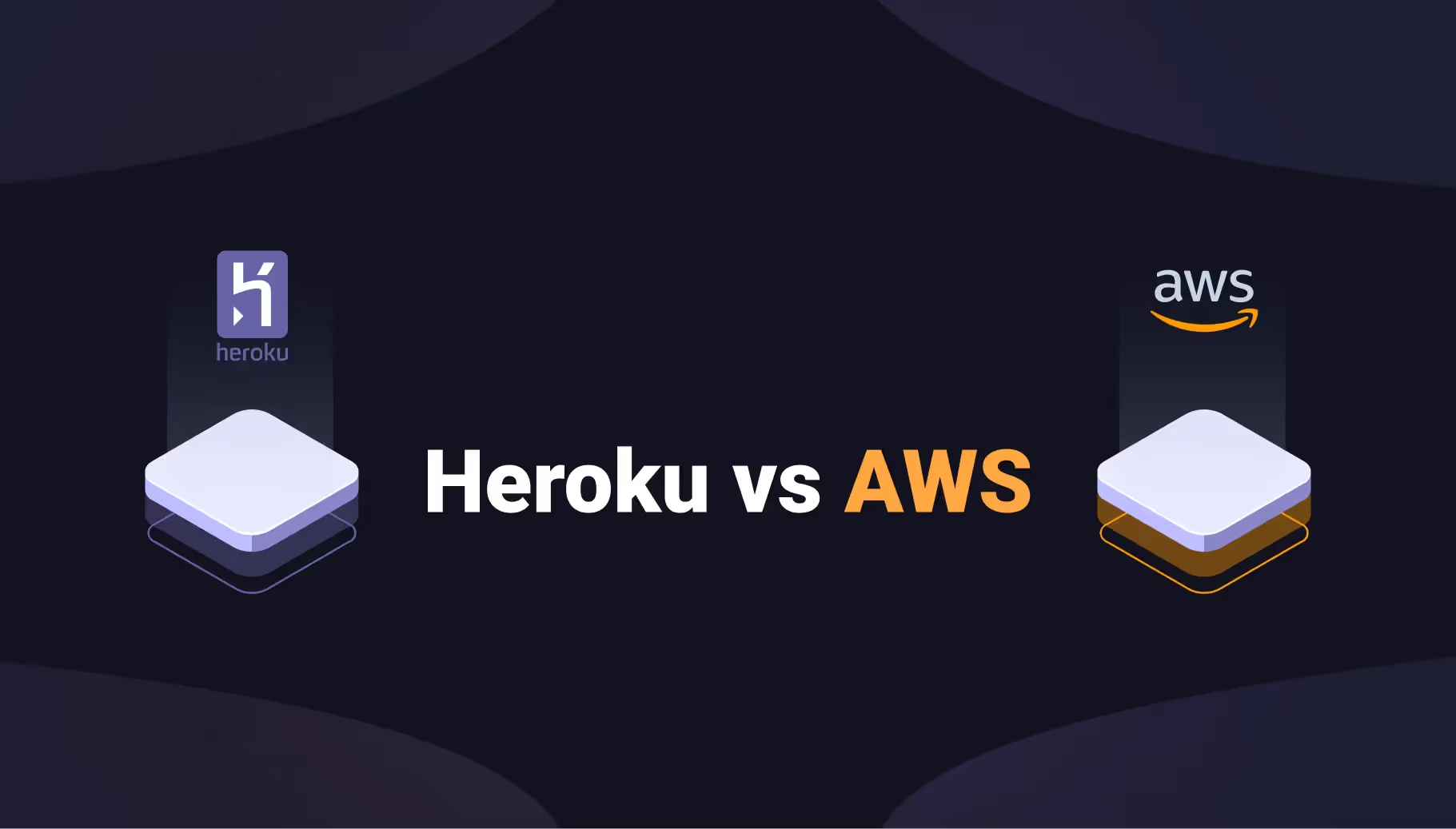


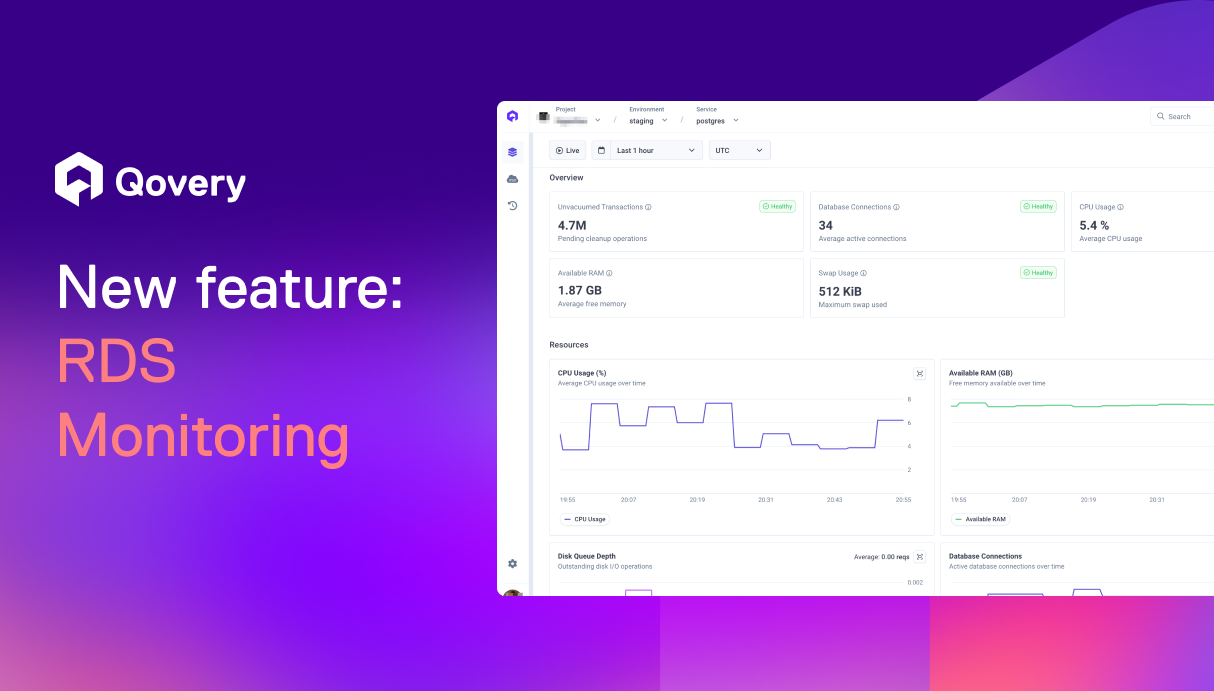

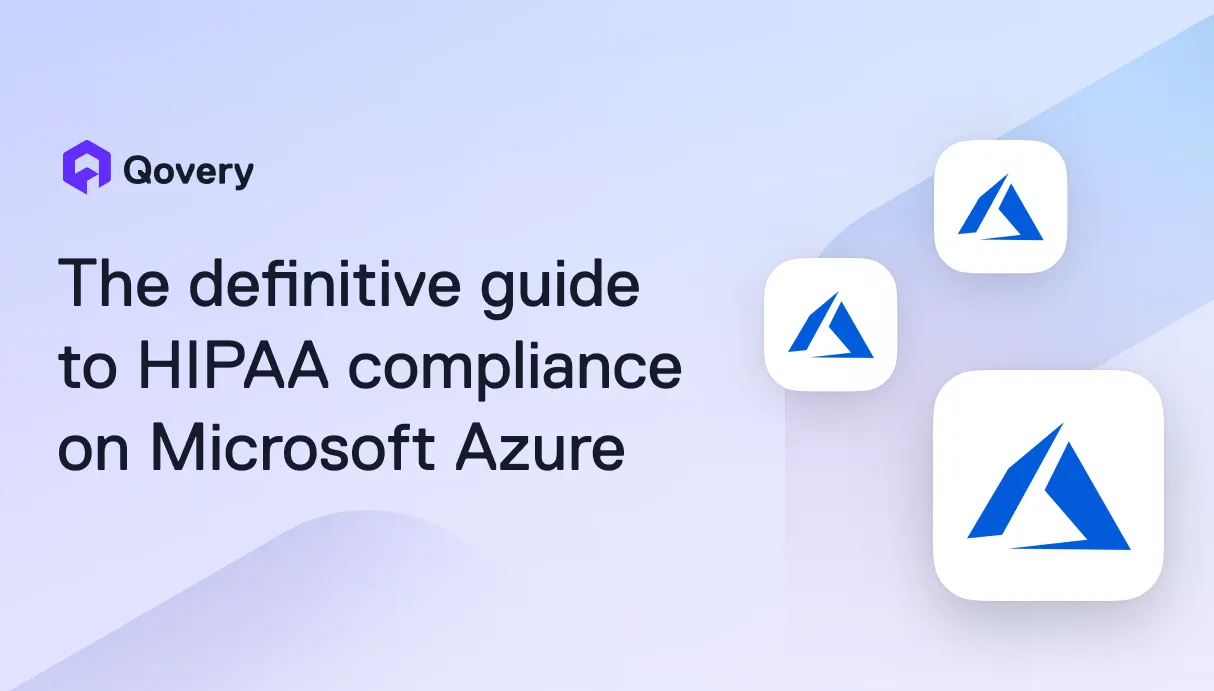
.webp)
